- Author Matthew Elmers [email protected].
- Public 2024-01-11 04:35.
- Last modified 2025-01-24 09:17.
Despite the fact that in the first days of the Second World War, the Red Army suffered huge losses and mostly retreated, there is, albeit scanty information about the use of captured, captured, German equipment by some units of the Soviet troops, in particular tanks. For example, in various articles and publications, the memoirs of G. Penezhko and M. Popel are often used, in which the night attack of the 34th Panzer Division, 8th Corps of the Southwestern Front, using captured vehicles, is described in great detail and even more colorfully.
But the memoirs are practically a work of fiction, but if you read the documents, you will notice that everything was not quite so. For example, the "Journal of Combat Actions of the 34th Panzer Division" says: "During June 28-29, when units of the division organized defense with the presence of tanks, twelve enemy tanks were destroyed. The destroyed 12 German tanks, most of them medium, are used by us to fire from the spot at the enemy's artillery in Verbakh and Ptichye. " This was the first successful experience of using German tanks against their masters, and even in the first days of the war. And yet, it should be noted that there is little verified information about the use of captured German tanks by the Red Army units in the first 1941 year of the war.
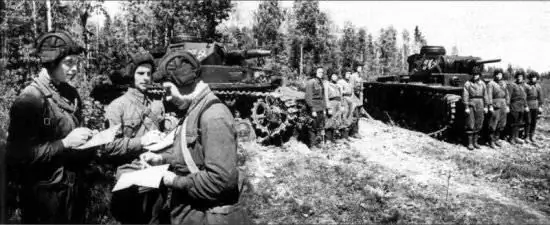
Nevertheless, according to combat reports of 1941, there are such facts: On July 7, 1941, during a counterattack of the seventh mechanized corps of the Western Front in the Kottsy area, a light tank T-26, under the command of a military technician of the 2nd rank Ryazanov (18th Panzer Division) broke into the rear of the enemy, where they fought for a day. Then he escaped from the encirclement to his own, bringing out two T-26 and one captured PzKpfw III with a damaged gun. August 5, 1941 In the battles on the outskirts of Leningrad, the combined tank regiment LBTKUKS captured two tanks that were blown up by mines made at the Skoda factories. On August 13, 1941, during the defense of Odessa, units of the Primorsky Army destroyed 12 tanks, three of which were subsequently repaired. In September 1941, during the Battle of Smolensk, the tank crew under the command of junior lieutenant S. Klimov, having lost their tank, transferred to the captured StuG III and knocked out two tanks, an armored personnel carrier and two trucks. On October 8, the same Klimov, commanding a platoon of three StuG IIIs (the document referred to as "German tanks without a turret"), "made a daring sortie behind enemy lines." At the end of 1941, with a view to more organized collection and repair of captured equipment, the Red Army Armored Directorate created a department for the evacuation and collection of captured equipment and issued an order "On accelerating the evacuation of captured and domestic armored vehicles from the battlefield." Subsequently, in connection with the increase in offensive operations, the department was improved and enlarged. In 1943, a Trophy Committee was created under the State Defense Committee, headed by Marshal of the Soviet Union K. Voroshilov.
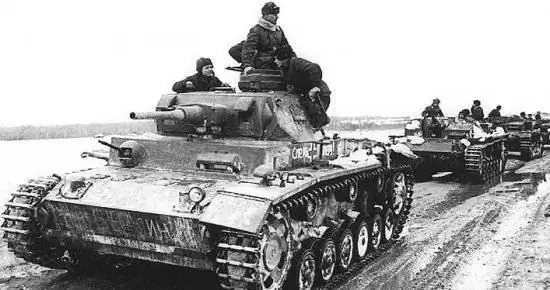
And already in the spring of 1942, German captured equipment was widely used in parts of the Red Army, by that time hundreds of fascist vehicles, tanks and self-propelled guns had been captured. The car to be repaired was sent to the rear to the factories of Moscow. For example, only the 5th Army of the Western Front from December 1941 to April 1942 captured and sent to the rear: 411 pieces of equipment (medium tanks - 13, light tanks - 12, armored vehicles - 3, tractors - 24, armored personnel carriers - 2, self-propelled guns - 2, trucks - 196, cars - 116, motorcycles - 43. In addition, during the same period of time, units of the Red Army collected 741 units of equipment (medium tanks - 33, light tanks - 26, armored vehicles - 3, tractors - 17, armored personnel carriers - 2, self-propelled guns - 6, trucks - 462, passenger cars - 140, motorcycles - 52), and 38 more tanks (PzKpfw I - 2, PzKpfw II - 8, PzKpfw III - 19, PzKpfw IV - 1, Pz. Kpfw. 38 (t) - 1, art tanks StuG III - 7). During April-May 1942, most of this captured German equipment was taken to the rear for repair and study of combat characteristics.
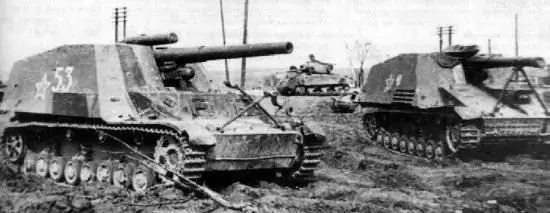
The repaired captured equipment entered the battle again, but this time on our side. All captured self-propelled guns and tanks had their own names "Alexander Suvorov", "Dmitry Donskoy", "Alexander Nevsky", etc. A large red star was applied to the sides, towers and even on the roof to protect against shelling from their side and air raids, but it didn't help much. For example, during the liberation of the left-bank Ukraine in 1943, two batteries of Soviet StuG III were used to support the 3rd Guards Tank Army. In the area of the city of Priluki, T-70 tankers noticed a StuG III self-propelled gun driving by and, despite the large red stars applied to the armor, opened fire on it from a distance of 300 meters. But they could not penetrate the armor of the captured self-propelled gun and were beaten by the self-propelled gunners and infantrymen who were on the self-propelled armor. The StuG III self-propelled captured guns were most actively used in the Red Army, they were considered tank destroyers and in fact confirmed their fighting qualities.
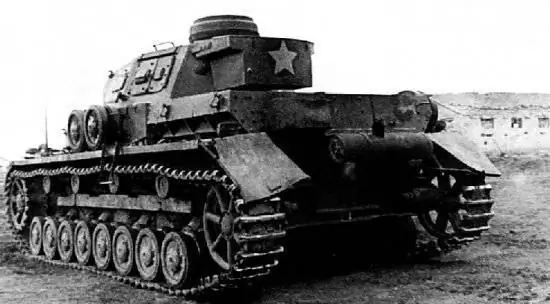
Also, Soviet tankers valued the German T-3 medium tanks for their comfort, excellent optics and radio. And the T-5 Panther tanks were equipped with experienced crews and were used mainly to combat tanks.
It is also reliably known that German captured equipment was used to create hybrid combat vehicles. For example SU-76I, the index "i" denotes a foreign base used for self-propelled guns based on captured captured Pz Kpfw III tanks. SU-76I was mass-produced at Machine-Building Plant No. 37 in Mytishchi. In total, two hundred and one self-propelled artillery units were produced, which, due to the small number and difficulties with spare parts, very quickly disappeared from the Red Army, serial production was stopped in the fall of 1943. Currently, two copies of the SU-76I have survived - one in the Ukraine in the city of Sarny, the second - at the open exposition of the Museum on Poklonnaya Gora in Moscow.
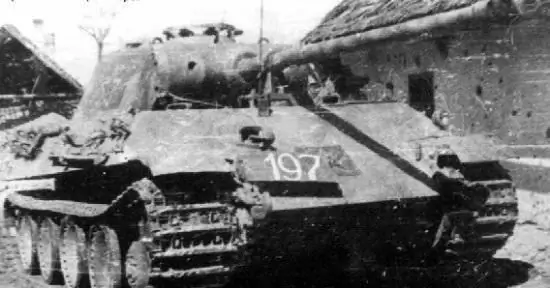
According to the Academy of Military Sciences, during the Second World War, the trophy committee removed from the front: 24 612 tanks and self-propelled guns, which would be enough to staff one hundred and twenty German tank divisions.






